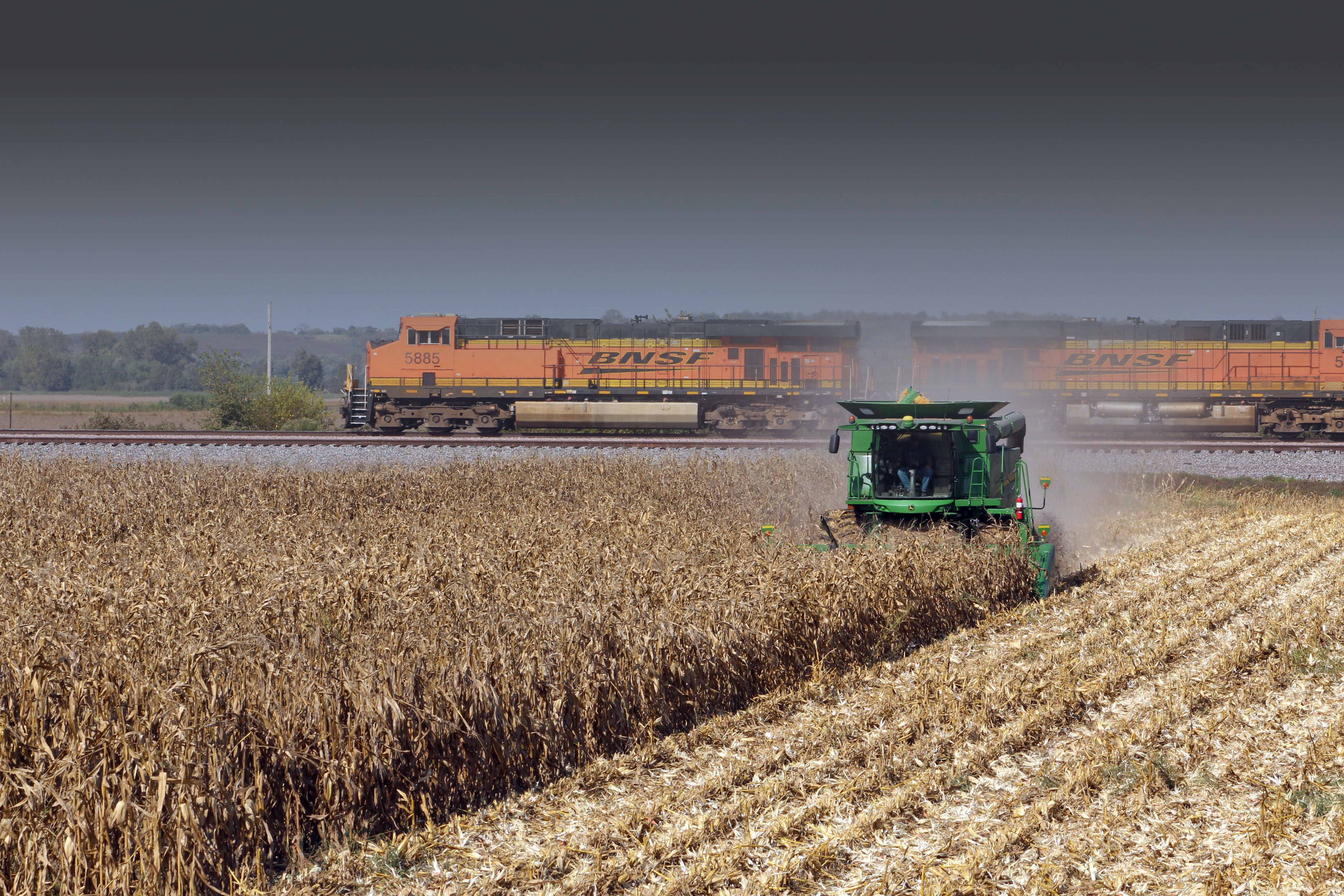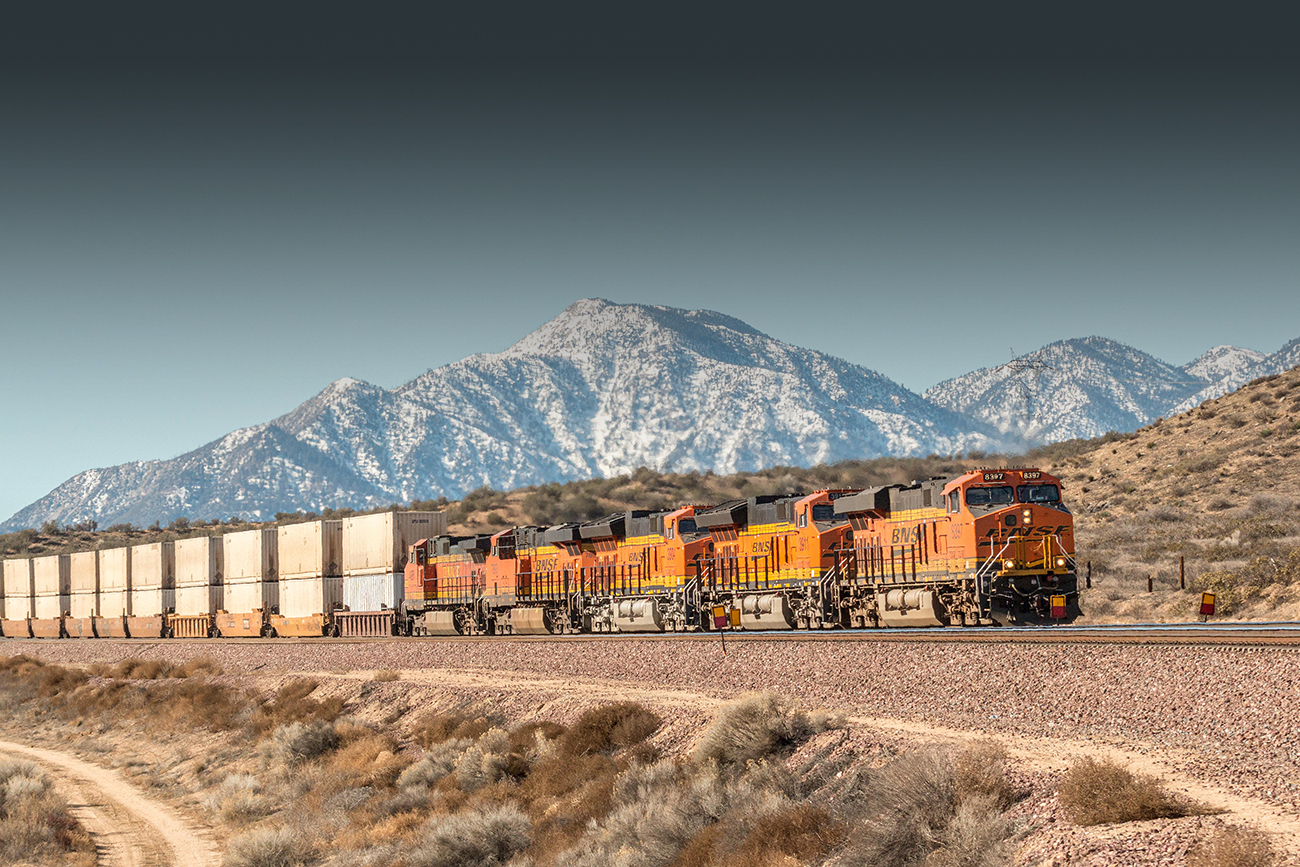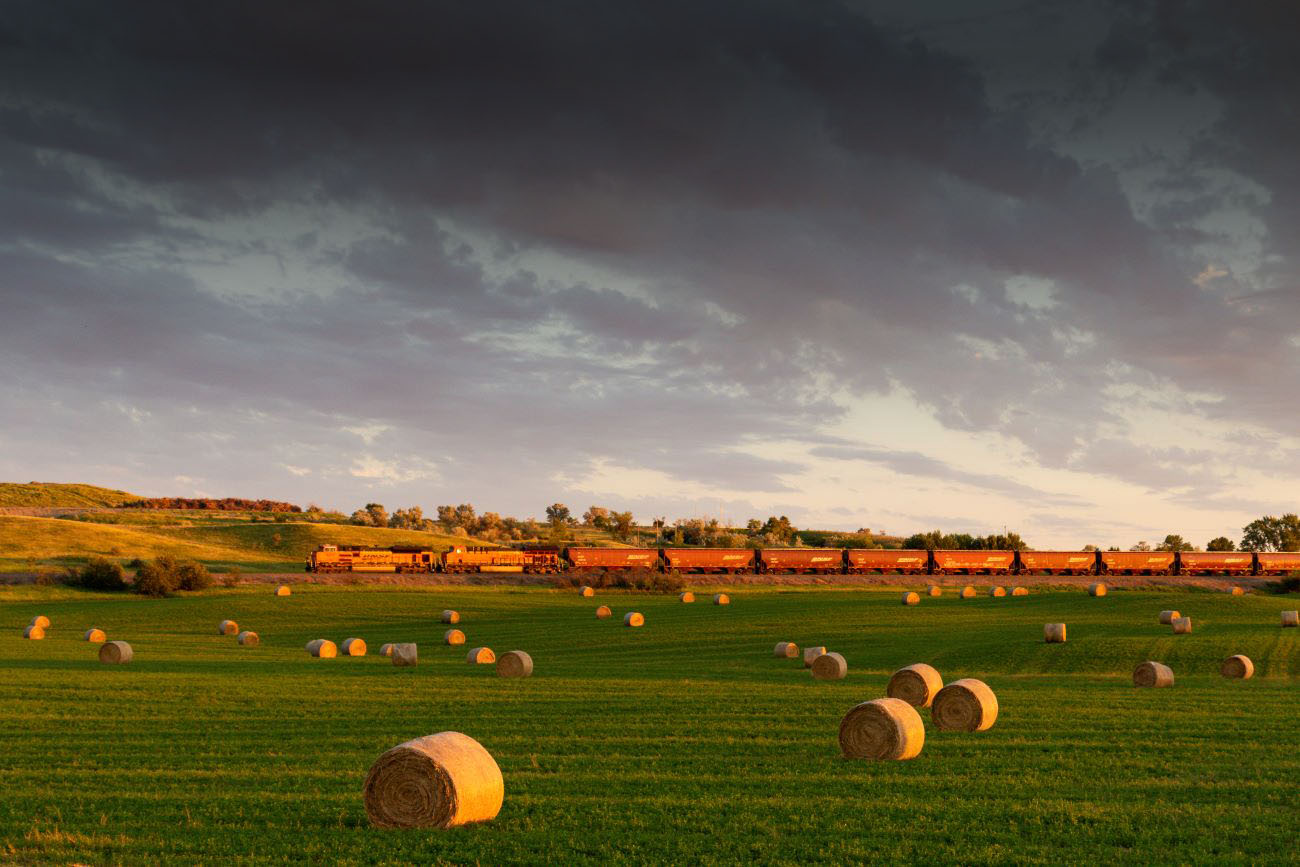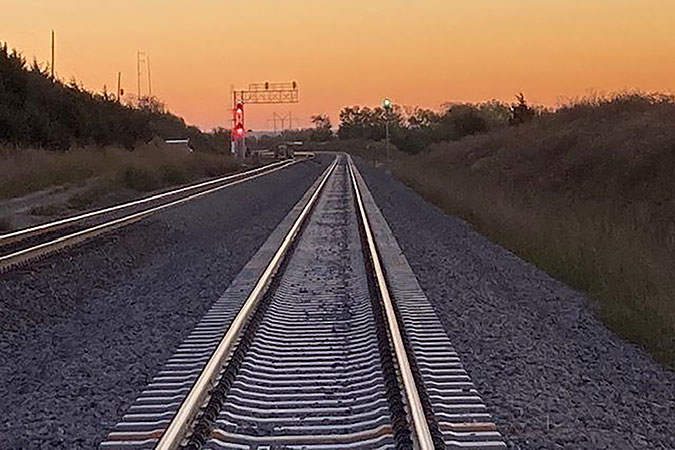
Twice as nice: BNSF’s Southern Transcon route gets closer to being fully multi-tracked
By SUSAN GREEN
Staff Writer
With the holidays ahead, BNSF just delivered a big present to customers, especially those with intermodal loads filled with wish-list goodies moving on our Southern Transcon. We officially unwrapped this “gift” on Monday, Nov. 18, when the last 3.5 of about 51 miles of new double track were officially cut over on BNSF’s Emporia Subdivision.
BNSF’s Southern Transcon route is our busiest, stretching from Southern California to Chicago. A little more than halfway across that 2,200-mile distance is the Emporia Sub, named for the nearby city and about 100 miles southwest of Kansas City.
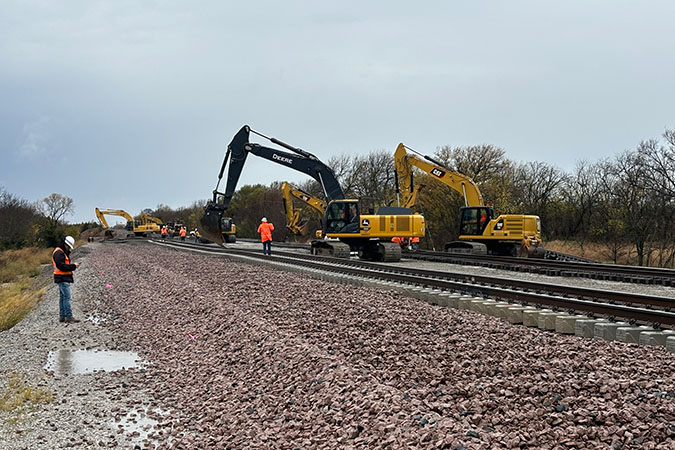
This last piece of double track – between Rose Hill and Mulvane, Kansas – means there are now two (or more) adjacent main lines on nearly the entire Southern Transcon. After this cutover, two short sections of single track are left: about 1.5 miles at Sibley, Missouri, crossing the Missouri River, and about 3 miles at Alva, Oklahoma, crossing the Salt Fork River.
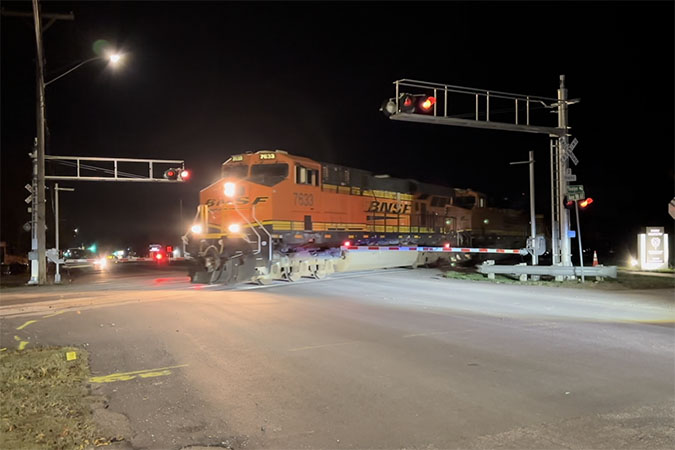
“We’ve been working on the Emporia Sub project since 2019,” said Craig Rasmussen, assistant vice president of engineering services and structures. “This final segment will be blended into the doubletrack at Mulvane, making the entire subdivision at least two main lines. Keeping trains flowing smoothly was the goal, so it makes sense that the final cutover spot, known today as East Junction, will just become a spot where trains keep rolling along double track with no reason to stop.”
Before this final segment went into service, another preceded it in October, when a 12-mile stretch was put in service in two phases between Rose Hill and Augusta, Kansas. When that was completed, excitement built as BNSF began prepping for peak season, the busy holiday shipping period between Nov. 25 and Christmas.
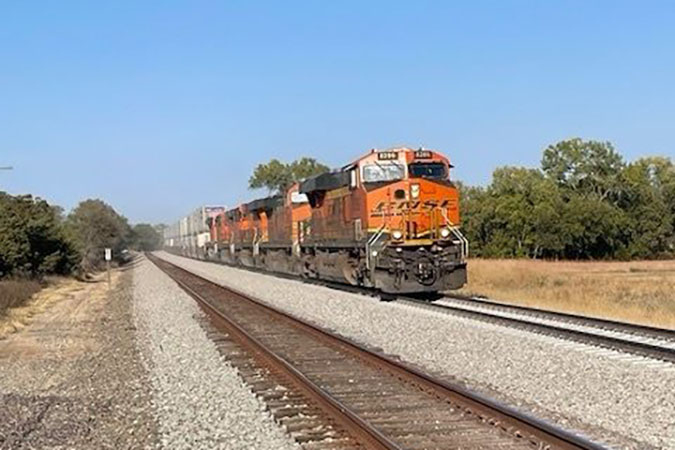
“A big thanks to our engineering teams for putting this key capacity in service for the country’s domestic peak shipping season ahead of the holidays,” said Jon Gabriel, group vice president of consumer products. “Our Southern Transcon is now almost completely double-, triple- or quadruple-tracked. We can now run multiple priority intermodal trains in and out of Southern California daily between key markets, with no need to stop a train every 10 miles to meet another throughout the trip.”
Since the formation of BNSF in 1995, the Southern Transcon has evolved in response to growth, with adjacent tracks added where there were chokepoints. The Emporia Sub was one such point.
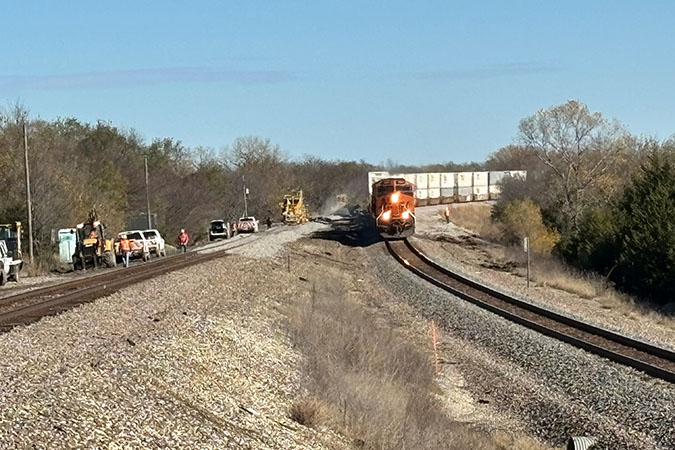
This latest addition will not only improve capacity and the flow of trains it also enables more eastbound trains to take a shorter primary route to Kansas City and points beyond. Currently, some eastbound trains take a longer route via Newton, Kansas. With this project completed, travel time is expected to be reduced by 90 minutes.
“Our commitment to growth through investment over the past several decades is one way BNSF is making intermodal service more ‘truck-like,’” Gabriel said. “And just like a highway, we can run traffic both directions simultaneously with passing lanes when needed.”
